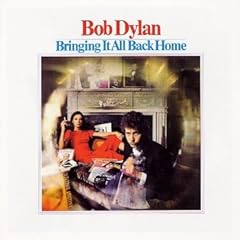Donovan - Sunshine Superman (US)
(1966)
 Tracks
Tracks
1 Sunshine Superman 3:15
2 Legend of a Girl Child Linda 6:50
3 Three King Fishers 3:16
4 Ferris Wheel 4:12
5 Bert's Blues 3:56
6 Season of the Witch 4:56
7 The Trip 4:34
8 Guinevere 3:41
9 The Fat Angel 4:11
10 Celeste 4:08
Donovan Phillips Leitch was born in Glasgow, Scotland in 1946, although you more than likely know him better as just plain old
Donovan. Many folk would probably describe the man as just a mere British version of
Bob Dylan, this however is very much disingenuous to both
Donovan and Dylan. Sure, both men started off with folk and the beatnik culture running through their veins, but by the time 1966 came along they couldn’t be more different.
Donovan’s launch pad was his folk driven debut from 1965, entitled
What's Bin Did and What's Bin Hid. But, by 1966
Donovan was branching out somewhat into territories not really touched by Guthrie, Baez or even Dylan for that matter. This transition ironically was due to
Donovan spending more time in the presence of other Americans. Indeed,
Donovan was probably the first of the British Invasion acts to gain influence from the flower power generation.
This new influence can be heard in all its glory on an album released in September 1966, distributed initially in The States alone.
Sunshine Superman would become the album that would set
Donovan apart from the Greenwich Village crowd. Don’t get me wrong, it still has its folky moments, but this second release from
Donovan is far too grand and trippy for that run of the mill tag. Instead, this album takes
Donovan into the realms of Psychedelia and back again, which for 1966, would put
Donovan right at the forefront of the emerging trippy era. Not bad for a poor man’s Dylan eh?

Produced by Mickie Most, with lovely arrangements from John Cameron,
Donovan on this album paints a very broad canvas with these songs. Many Cellar Dwellers would know the title track, which sets Donovan’s stall out firmly in the court of the Psychedelic, but strangely it remains grounded in the beatnik style, thanks predominantly to Donovan’s marvellous vocal and finger plucking style carefully maintained in the production. This song opens side one, but the opener to the second side of the album,
Season of The Witch, isn’t bad either. As songs go you will be hard pushed to find a song as brilliant as this one, the best on the album in my humble opinion.
Some of these songs are obviously quite lengthy, only four venture below the four minute mark. Yet all these songs remain marvellous due to how weighty they truly are. Glorious, textural and vibrant numbers like
Celeste, Legend of a Girl Child Linda and
Guinevere elevate this album to levels of brilliance only matched by a couple of other releases from 1966, but certainly it is never overshadowed by them.

Due to a bit of a dispute with his record label
Pye in the UK,
Donovan had to wait a year before releasing this album in his homeland. That said the US version remains far superior, mostly because of the inclusion of
The Trip on the US release, but also because in 1967, this album is just one of many I’m afraid, whereas in 1966 this album feels special, a true pioneer of the Psychedelic genre and a must for any Cellar Dweller.



















 Linear Mode
Linear Mode
